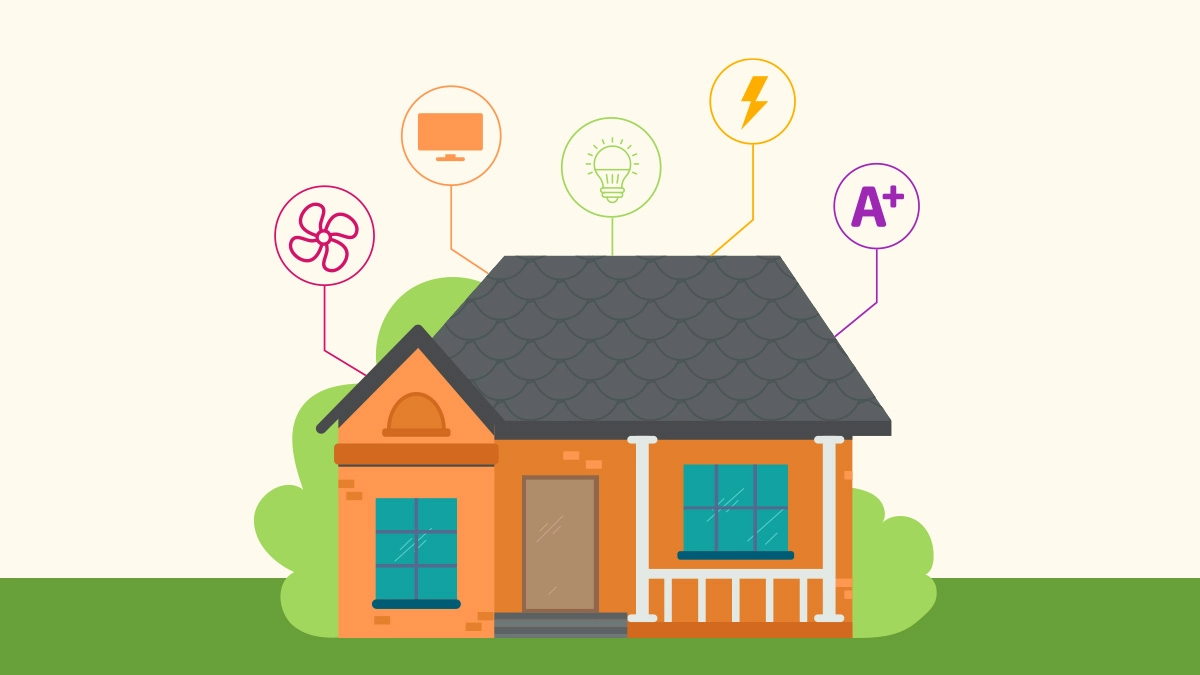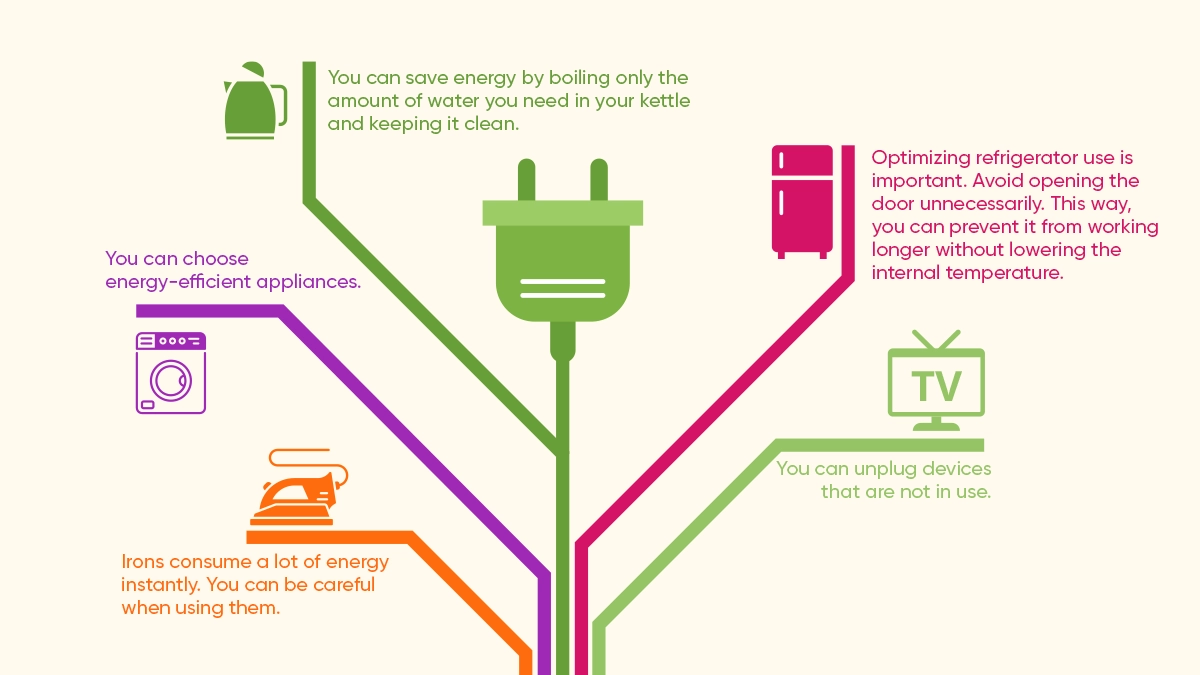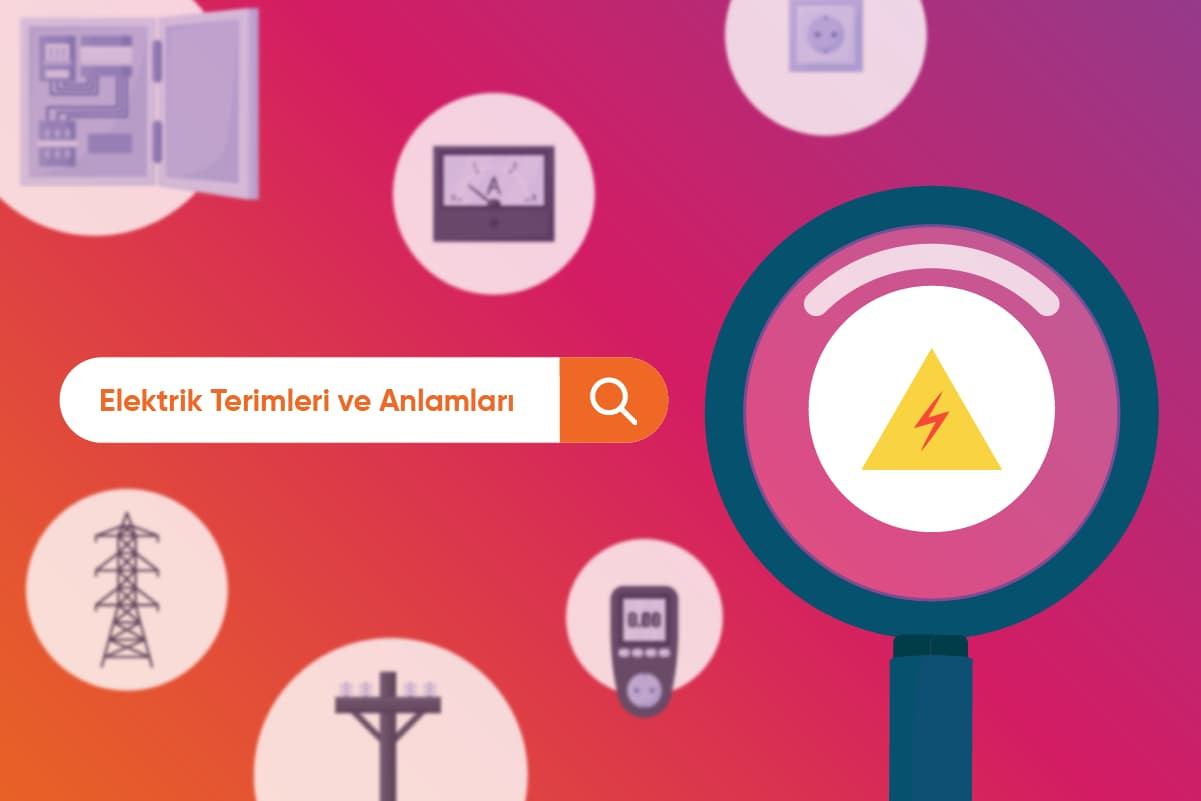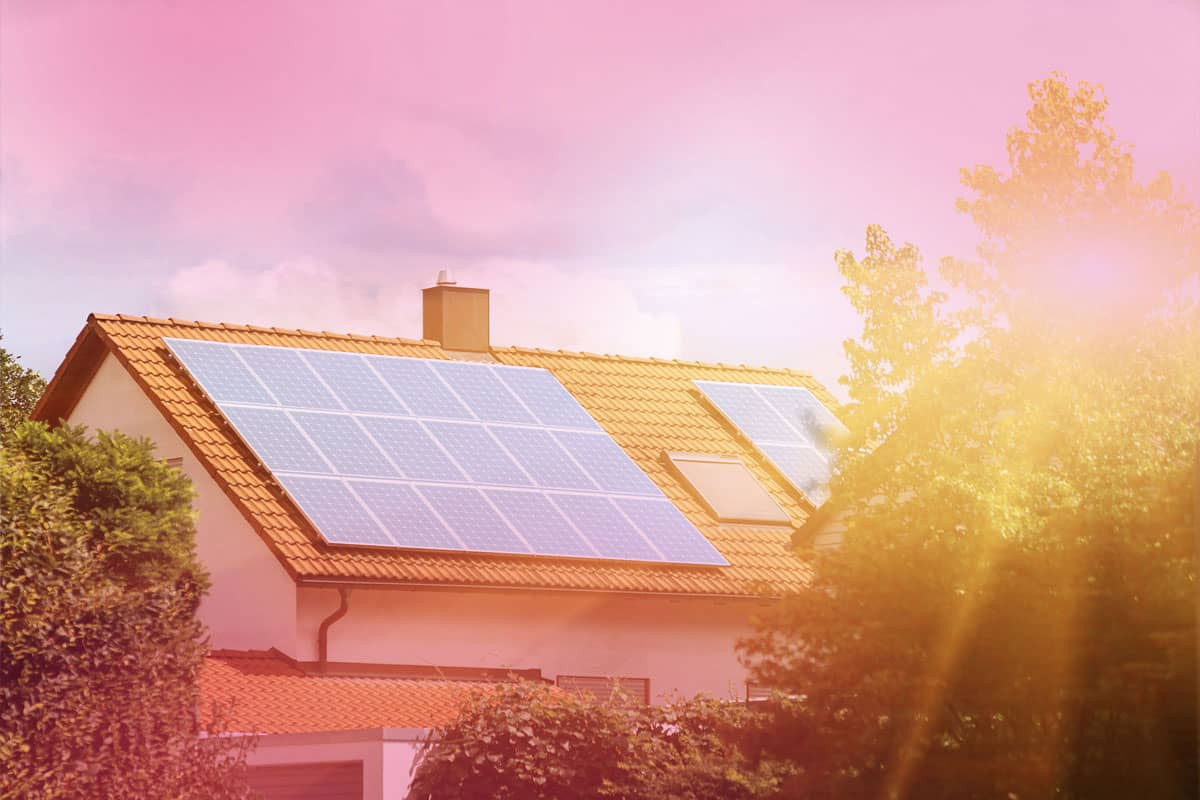.webp)
Household Appliances with the Highest Power Consumption Ranked in Order
What is in this article?
A wide range of electronic devices used to ensure a more comfortable life at home can unknowingly lead to significant energy consumption. These devices, which have become an indispensable part of daily life, improve comfort while also directly affecting our electricity bills. But how much power does each device consume? If you know which household appliances consume the most power and adjust your usage habits accordingly, then you can save energy and keep your bills under control. So, which household appliances, ranked in order, consume the most power? Do washing machines, refrigerators, or kettles consume a lot of power? Let's examine all the details you're curious about together.
How Can You Calculate Your Household Power Consumption?
In order to accurately analyze electricity consumption, you need to know the basic calculation methods first. The power consumption of any household appliance is generally expressed in kilowatt-hours (kWh). The calculation of consumption is as follows:
Consumption (kWh) = Power (Watt) × Usage Period (Hours) / 1000
For example, a 2000-watt electric heater operating for 3 hours a daykilowatt-hours (kWh).
consumes 2000 × 3 / 1000 = 6 kWh.
If this device is operated in this fashion every day, by the end of the month this heater alone will have consumed 180 kWh. Depending on electricity prices, this consumption can cause significant costs. Therefore, knowing the power rating of every device in the household and analyzing how often it is used is an important step in controlling overall electricity costs.
 Household Appliances with the Highest Power Consumption Ranked in Order
Household Appliances with the Highest Power Consumption Ranked in Order
Some devices consume a lot of power even if they are used for a short time. And some of them have a significant impact on the electricity bill because they operate for long periods of time. Here are the appliances that consume the most power at home:
Electric Water Heater
Electric water heaters used for hot water needs operate at high wattage. Consuming between 4000 and 6000 watts on average, these devices use a lot of power in a short time. Longer shower times further increase the consumption.
Air Conditioner
Air conditioners operating continuously during the summer months are one of the largest factors in your electricity bill. Consuming an average of 1200 to 2000 watts of power, air conditioners can consume varying amounts of power depending on the size of the room, the outside temperature, and the temperature setting.
Refrigerator
Refrigerators operate 24 hours a day. Thus, they are among the appliances with the highest power consumption. While consumption varies depending on the energy class, an old, inefficient refrigerator can consume up to 400 to 600 kWh per year. Class A+++ refrigerators of the new generation can reduce this consumption by half.
Electric Heaters (Oil Radiators, Fan Heaters)
Frequently used during the winter months, these devices typically operate in the 1500 to 2500 Watt range. Monthly consumption increases significantly as the usage period extends.
Washing Machine
Washing machines can consume between 0.5 and 2 kWh of energy, based on their energy class and washing temperature. Operating 3 or 4 times a week, a washing machine consumes an average of 15 to 25 kWh of power per month.
Ovens and Stoves
Electric ovens consume between 1500 and 3000 watts of power. Long cooking times also affect your electricity bill.
Television
Televisions used for more than 4 to 5 hours a day consume between 100 and 400 watts of power. Consumption increases as the size of the display increases.
Dishwasher
It consumes an average of 1 to 2 kWh of energy per wash. It may consume 20–30 kWh of energy at the end of the month if used 4 or 5 times a week.
Daily Household Power Consumption and Its Distribution
The rate of household power consumption varies depending on the number, type, energy class, and operating patterns of the appliances used. In an average household, daily power consumption can be distributed as follows:
- Refrigerator 15-20%
- Heating/Cooling 30-40%
- Lighting 10%
- Household appliances (washing machine, dishwasher, oven) 20-25%
- Electronic devices (TV, modem, computer) 10-15%
Power Consumption Analysis of Household Appliances
When we talk about the appliances that consume the most power at a household, the first thing that comes to mind is household appliances. The energy class of these appliances directly affects consumption. Here are the consumption analyses for common household appliances:
- Refrigerator: It is the greatest constant consumer as it operates daily. While class A models consume around 150 to 200 kWh per year, older models can exceed 500 kWh.
- Washing Machine: Machines that wash at low temperatures consume less energy. Class A+++ appliances consume 30 to 40% less energy.
- Dishwasher: Consumption is reduced when it is operated in economy mode. Intensive programs and the drying function cause extra power consumption.
- Drying Machine: This is one of the most power-consuming appliances. Even in energy-efficient models, you may experience consumption between 3 and 5 kWh in a single program.
There are also appliances that seem small but consume a lot of power when used frequently. These devices are:
- Hair dryer 1000-2000 Watts
- Water heater (kettle) 1500-2000 Watts
- Iron 2000-2500 Watts
- Coffee Maker 1000 Watts
- Toaster 800-1200 Watts
- Blender / Mixer 300-800 Watts
 Practical Ways to Reduce Your Power Consumption
Practical Ways to Reduce Your Power Consumption
Increasing energy costs and awareness for a sustainable lifestyle make saving power at home more important than ever. You may significantly reduce your power consumption by making minor yet effective changes in your daily habits. You may use these practical methods to both reduce your bills and contribute to the environment:
- You can opt for energy-efficient appliances. Older appliances or electronic devices in your household typically consume a lot of power. Therefore, you may prefer appliances such as refrigerators, washing machines, and dishwashers with an A++ or A+++ energy rating.
- We advise you to unplug unused devices. Many devices such as TVs, computers, modems, or microwave ovens continue to consume power even in standby mode. You may save energy by unplugging devices that are not in use while you are asleep or away from home.
- You need to take care when using kettles and water heaters. The kettle is one of the small household appliances that consume the most power. Thus, it is recommended that you boil only as much water as you need. This also prevents the devices from calcifying. A dirty surface will use more energy.
- The optimization of refrigerator usage is extremely important. You should not place the refrigerator too close to the wall. This ensures that air circulation is not obstructed. You should not open the door unnecessarily. It operates more as the internal temperature drops.
- You need to take care when using the iron, oven, and washing machine. These appliances consume a lot of power instantly.
Alternative Devices That Consume the Least Power
You can save power not only by adopting new habits but also by choosing the right appliances. Some appliances used in households consume significantly less power than similar models thanks to advanced technologies. By preferring these alternative products, you can both lead an environmentally-conscious life and significantly reduce your electricity bills.
- LED Lighting Systems: You can consider them as an alternative to the old type of incandescent, halogen, or fluorescent bulbs. LED lamps consume up to 80% less electricity. Additionally, they have a much longer lifespan.
- Air Conditioners and Boilers with Inverter Technology: Inverter systems operate automatically according to the ambient temperature. Power is reduced when necessary. They also guarantee constant consumption of power.
- Appliances with A+++ Energy Rating: Class A+++ washing machines, dishwashers, refrigerators, and dryers operate using significantly less power. They may consume 30 to 60 percent less power compared to a Class A device.
- Energy-Efficient Washing Machines and Dishwashers: Machines that provide effective cleaning at low temperatures and on short cycles perform the same task using less power.
- Dryers with Heat Pumps: Machines that operate with heat pump technology can reuse the air. This results in energy savings of up to 50%.
- Low-Wattage Vacuum Cleaners: New generation vacuum cleaners with a motor power of 700-900W deliver the same performance with less power.
- Energy-Efficient TVs: As the display size increases, so does power consumption. You may save money by avoiding displays that are larger than necessary.
- Smart Outlet and Timer Systems: These products are ideal for preventing devices from operating unnecessarily. They offer features such as control via a mobile app, setting usage time, and monitoring energy consumption. They reduce monthly consumption by preventing unnecessary usage.
 Monitor Your Electricity Consumption with Aydem
Monitor Your Electricity Consumption with Aydem
One of the most effective ways to control your electricity consumption is to regularly monitor and analyze your consumption. You can view your consumption data thanks to the digital solutions offered by Aydem Perakende. You can also check the details of your tariff to stay informed about your current status. By comparing your bills, you can figure out which devices are using too much power. Thanks to Aydem, your power consumption becomes more transparent, and you can make more informed decisions.
In this way, you can save power and keep your budget in check.

 Online Services
Online Services Application Inquiry
Application Inquiry Pay Assurance Fee
Pay Assurance Fee Query Installation Number
Query Installation Number Compensation Fee Inquiry
Compensation Fee Inquiry Automatic Payment Order Inquiry
Automatic Payment Order Inquiry Partnership
Partnership







Leave a Comment